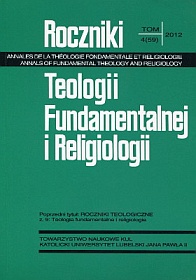Differentia specifica of the Kabbalistic Category Ein Sof
Abstract
The present article deals with the fundamental concept in Kabbalah, i.e. the classical Jewish mysticism (Jewish esoterism) from the 11th century onwards, namely the Ein Sof category. Ein Sof - the term that indicates the status of Deus absconditus, Deus otiosus, the totally transcendent God - exemplifies the apophatic, ultra-negative way of thinking and talking about God. Ein Sof, literally “without end”, “endlessness”, refers to God in “his” unknowable, unthinkable, inaccessible, and non-revealing peculiarity. And yet, Jewish mystics did try not to leave this concept completely without any specifications. As a matter of fact, kabba- lists, to talk about the manifested Ein Sof, use the conception of sephiroth that in developed kabbalistic exegesis means divine attributes, potencies, and emanations, through which - cause they are the immanent part of Ein Sof’s nature - God can be comprehended and even described. Jewish mystics treated the sephiroth as the divine “instruments”, “vessels” (kelim), and the question of great significance was how far the kelim were consubstantial, isomorfic with Ein Sof. The majority of kabbalists came to a conclusion that the sephirothic kelim are in fact identical with Ein Sof in their essence, with the assertion that in sephiroth Ein Sof, i.e. Deus absonditus, becomes Deus revelatus. Hence, sephiroth are simultaneously the substance of Ein Sof and the divine “instruments”, and it is only owing to them that God Ein Sof can be anyhow held forth on.
Copyright (c) 2012 Roczniki Teologii Fundamentalnej i Religiologii

This work is licensed under a Creative Commons Attribution-NonCommercial-NoDerivatives 4.0 International License.

